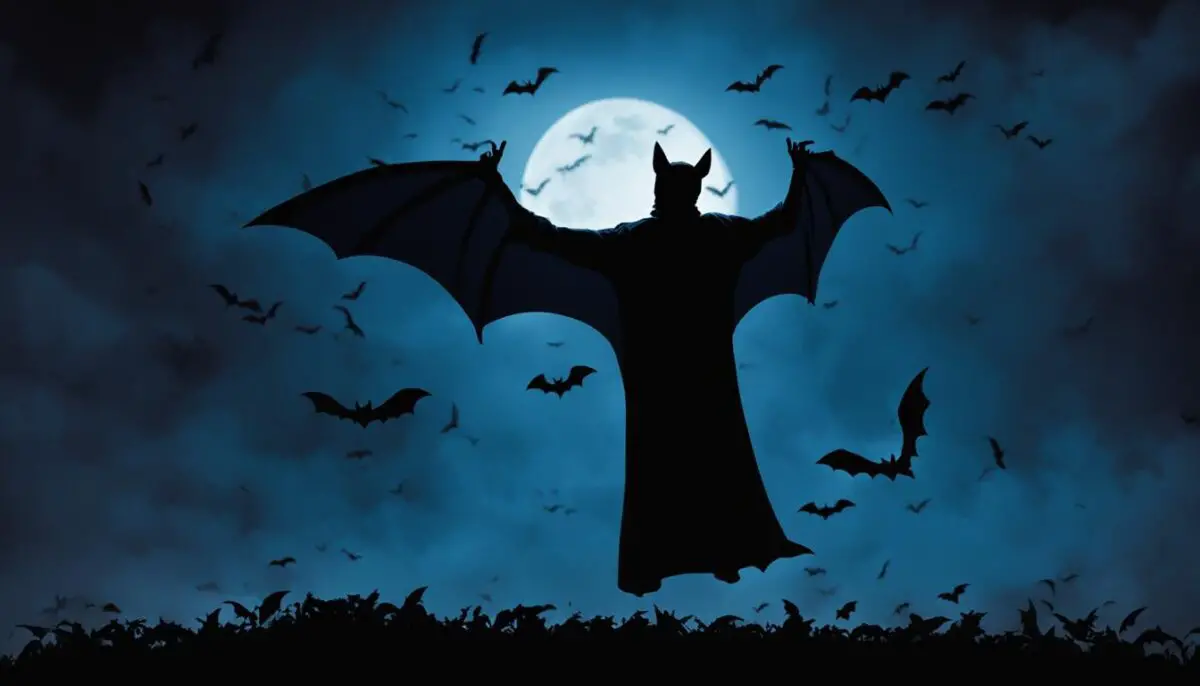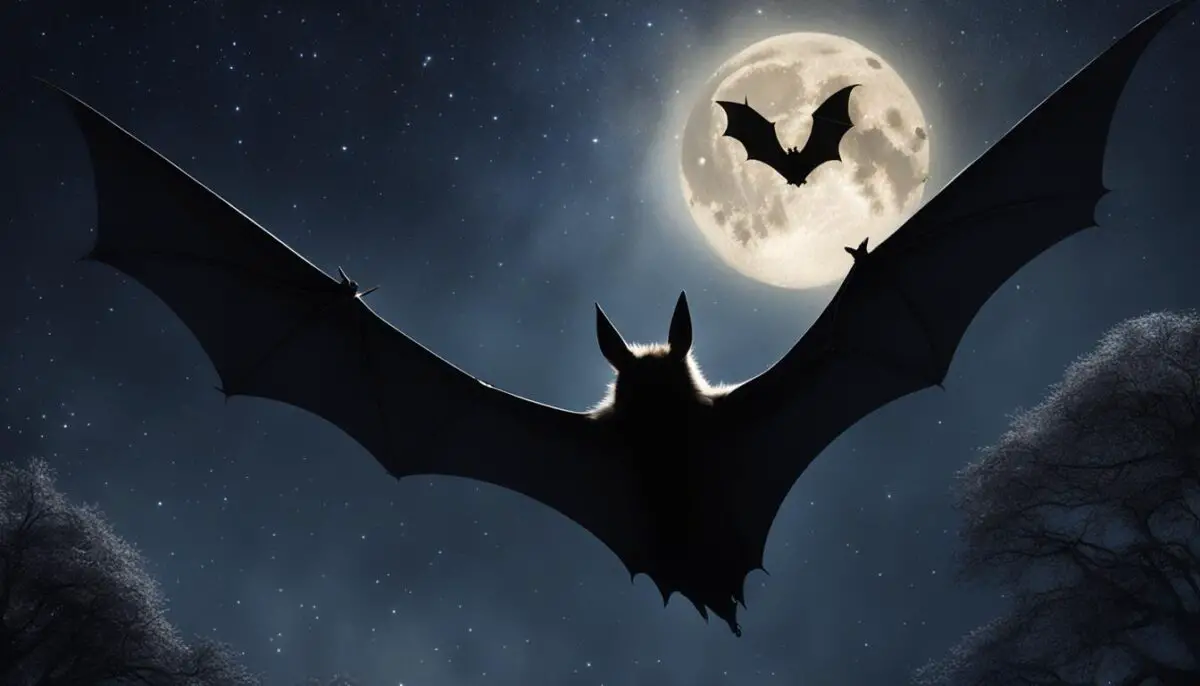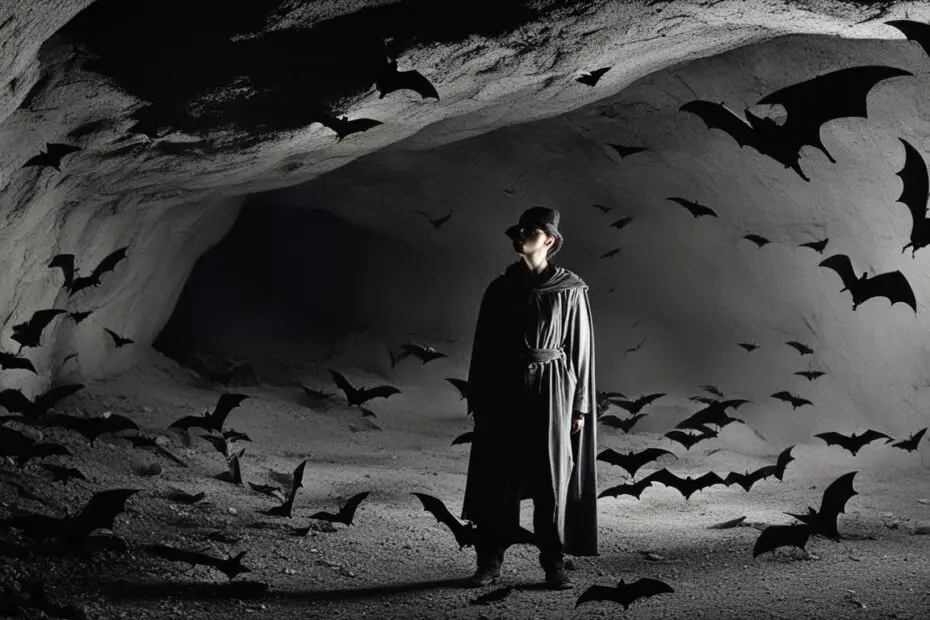Bats have long been shrouded in myths and misconceptions, often portrayed as creatures that pose a threat to humans. One common myth is that bats attack humans at night, seeking our blood. However, the truth is quite different. Bats do not attack humans at night. In fact, they play a vital role in our ecosystems and are more interested in insects than in us.
It is important to understand the reality about bats and take necessary precautions to ensure human safety around them. By dispelling these misconceptions, we can appreciate the benefits that bats bring to our environment and coexist peacefully with these fascinating creatures.
Key Takeaways
- Contrary to popular belief, bats do not attack humans at night.
- Bats primarily eat insects and provide natural pest control.
- Bats play a crucial role in pollination and seed dispersal, promoting biodiversity.
- Bat guano is an excellent natural fertilizer for organic farming.
- To ensure human safety, it is recommended to contact animal control for bat removal and avoid direct contact with bats.
The Eating Habits of Bats
Bats exclusively feed on a diverse menu of insects, including flies, wasps, and mosquitoes. Contrary to popular belief, bats do not have a taste for human blood. In fact, their diet consists solely of insects, making them an invaluable asset in natural pest control.
Did you know that a single bat can consume up to 1,000 insects in a single night? This voracious appetite for insects makes bats an efficient and eco-friendly solution for reducing the population of disease-carrying pests.
“Bats are a natural form of pest control, helping to keep insect populations in check and minimizing the need for harmful pesticides.”
By preying on insects, bats help to maintain the balance of ecosystems and protect crops from pest damage. Their ability to control insect populations naturally makes them an important ally in agriculture and gardening.
So, the next time you see a bat swooping through the night sky, remember that it’s on a mission to maintain the delicate balance of nature by feasting on the pests that threaten our crops, gardens, and well-being.

The ecological importance of bats cannot be overstated. Their role as pollinators and seed dispersers contributes to the preservation of biodiversity, the health of ecosystems, and the well-being of countless plant species. By nurturing bat populations and creating suitable habitats, we can safeguard the delicate balance of our natural world.
The Benefits of Bat Guano
Bat guano, or bat poop, is a valuable resource for organic farming and gardening. It serves as an excellent natural fertilizer that provides essential nutrients for plant growth. The nutrient composition of bat guano includes nitrogen, phosphate, and potassium, which are crucial elements for healthy plant development.
Bat guano is rich in nitrogen, which promotes vigorous leafy growth and overall plant health. Nitrogen is a key component of chlorophyll, the compound responsible for photosynthesis, and helps plants produce energy. Additionally, nitrogen aids in the formation of proteins, enzymes, and DNA, all vital for plant growth and development.
In addition to nitrogen, bat guano is a valuable source of phosphorus. Phosphorus plays a crucial role in root development, flowering, and seed production. It also facilitates energy transfer within plants and helps in the conversion of sunlight into usable energy.
Potassium is another essential nutrient found in bat guano. It contributes to strong stems and roots, improves water uptake efficiency, and enhances disease resistance in plants. Potassium also plays a role in regulating overall plant metabolism and photosynthesis.
Bat guano is highly sought after by organic farmers and gardeners due to its numerous benefits. It is a sustainable alternative to synthetic fertilizers as it is a natural byproduct of bat excretion. Using bat guano as a fertilizer supports organic farming practices and helps maintain soil health.
Organic farmers prefer bat guano because it fosters soil fertility and improves soil structure. The organic matter in bat guano enhances water retention capacity, reduces erosion, and promotes microbial activity, thereby creating a healthy soil ecosystem.
Furthermore, bat guano contributes to the overall resilience of plants against pathogens and pests. Its use as a fertilizer supports a balanced and sustainable approach to plant nutrition, resulting in healthy growth, increased yields, and improved crop quality.
Benefits of Bat Guano Fertilizer:
- Rich source of nitrogen, phosphorus, and potassium
- Promotes vigorous leafy growth and plant health
- Aids in root development, flowering, and seed production
- Enhances nutrient absorption and overall plant metabolism
- Improves soil fertility and structure
- Supports organic farming practices
- Increases disease resistance in plants
- Reduces the reliance on synthetic fertilizers
Using bat guano as a natural fertilizer aligns with the principles of organic farming and sustainable agriculture. It offers an eco-friendly solution that benefits both plants and the environment.

Human-Bat Interactions and Safety Tips
While bats do not attack humans, it is important to ensure safety during human-bat interactions. Bats are fascinating creatures that play an essential role in our ecosystem. However, there are certain precautions that we should take to stay safe from bats at night.
- Do not attempt to remove bats from your home or building on your own. Instead, contact animal control or a professional bat removal service. They have the expertise and knowledge to handle these situations safely and humanely.
- Keep in mind that bats can carry diseases such as rabies. It is crucial to avoid direct contact with bats or their droppings. If you come into contact with a bat, seek medical advice immediately.
- Respect the natural habitats of bats. Bats are typically found in caves, trees, and other secluded areas. Avoid disturbing their nests or roosting sites, as this can disrupt their behavior and cause stress to the bats.
Staying Safe from Bats at Night
To stay safe from bats at night, follow these tips:
- Close all windows and doors in the evening to prevent bats from entering your home.
- If you encounter a bat outside, give it space and do not attempt to handle or touch it.
- Use mosquito nets or screens to keep bats out of sleeping areas.
- Avoid unnecessary outdoor activities during peak bat activity times, typically around dusk and dawn.
By taking these necessary precautions and staying informed about bat behavior, you can minimize any potential risks associated with human-bat interaction. Remember, bats are valuable creatures that deserve our respect and protection.
“Bats are not out to get us. They are just trying to live their lives and fulfill their ecological role. By understanding and coexisting with bats, we can appreciate the unique contributions they make to our environment.” – Dr. Sarah Johnson, Bat Conservation Expert
For a visual representation of these safety tips, refer to Table 1 below:
| Human-Bat Safety Tips | |
|---|---|
| Do not remove bats from your home on your own |  |
| Avoid direct contact with bats and their droppings |  |
| Respect the natural habitats of bats |
Conclusion: Debunking the Myth of Bat Attacks on Humans
Contrary to popular belief, bats do not attack humans at night. These fascinating creatures play a vital role in ecosystems, helping to maintain ecological balance and providing valuable services such as natural pest control, pollination, and seed dispersal. It is important to dispel the myths and misconceptions surrounding bats and understand the truth about their behavior.
While precautions should be taken to ensure human safety around bats, it is crucial to recognize that they are not a threat. Bats primarily feed on insects, such as flies and mosquitoes, making them beneficial allies in controlling pest populations. Their contribution to pollination and seed dispersal is also crucial for the overall health and diversity of plant species.
To coexist with bats in harmony, it is recommended to respect their natural habitats and avoid direct contact. In cases where bats are suspected to be residing in homes or buildings, it is advised to seek assistance from animal control professionals for their safe removal. By taking necessary precautions and staying informed, we can appreciate the importance of bats in our ecosystems and ensure our own safety during human-bat interactions.
FAQ
Do bats attack humans at night?
No, bats do not attack humans at night. Bats are actually beneficial animals that primarily eat insects and play a crucial role in pest control. It is a myth that bats attack humans for their blood.
Are bats harmful to humans at night?
Bats are not harmful to humans at night. They exclusively eat insects, such as flies, wasps, and mosquitoes, and do not feed on human blood. Bats provide natural pest control, helping to reduce the population of disease-carrying insects.
How do bats contribute to ecosystems?
Bats play a crucial role in ecosystems as pollinators and seed dispersers. They contribute to the development of fruits and flowers by pollinating when they feed on nectar in flowers. Additionally, bats help in dispersing seeds, promoting the growth and diversity of plant species.
Is bat guano beneficial for plants?
Yes, bat guano, or bat poop, is an excellent natural fertilizer. It is rich in nitrogen, phosphate, and potassium, which are essential nutrients for plant growth. Bat guano is commonly used in organic farming as a safe and effective fertilizer.
How can I stay safe around bats at night?
While bats do not attack humans, it is important to ensure safety during human-bat interactions. If bats are suspected to be residing in homes or buildings, it is recommended to contact animal control for their removal. It is also important to avoid direct contact with bats and to respect their natural habitats.

